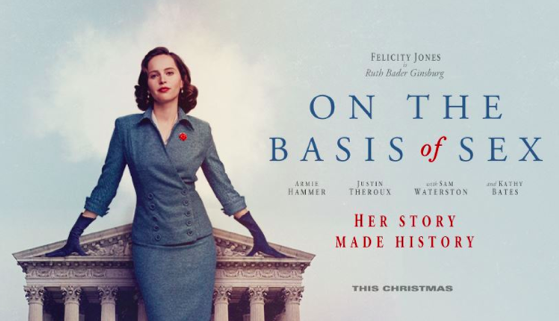
Working on a chapter about the film On the Basis of Sex which is a biopic based on the early life and career of Supreme Court associate Justice Ruth Bader Ginsburg I came across this podcast that researched the other 8 women who were part of her Harvard Law School class of 1956.
If you’ve seen the film (and you should because it’s good!) or read much about the Justice you’ll have heard the story of how the Dean of the law school invited them along with some male students to his house for dinner. Then he asked each of the women in the class to stand up and explain why she’s at Harvard, taking the place of a man.
Ugh!
We all know Ginsburg’s career was such a skyrocket that it put that jerk in his place – but then some journalists thought about researching those other 8 women to see how their careers went – and they started a podcast about the women’s lives.
I love finds like this!
Read more about Justice Ruth Bader Ginsberg in the book series I am editing — Women Making History from ABC-CLIO.
Ruth Bader Ginsburg: A Life in American History (Women Making History) by Nancy Hendriks
Ruth Bader Ginsburg: A Life in American History explores Ginsburg’s path to holding the highest position in the judicial branch of U.S. government as a Supreme Court justice for almost three decades. Readers will learn about the choices, challenges, and triumphs that this remarkable American has lived through, and about the values that shape the United States.=
Ginsburg, sometimes referred to as The Notorious RBG or RBG was a professor of law, a member of the American Civil Liberties Union, an advocate for women’s rights, and more, before her tenure as Supreme Court justice. She has weighed in on decisions, such as Bush v. Gore (2000); King v. Burwell (2015); and Masterpiece Cakeshop v. Colorado Civil Rights Commission (2018), that continue to guide lawmaking and politics. Ginsburg’s crossover to stardom was unprecedented, though perhaps not surprising. Where some Americans see the Supreme Court as a decrepit institution, others see Ginsburg as an embodiment of the timeless principles on which America was founded.


![Mentoris Project Podcast: Building Heaven’s Ceiling: A Novel Based on the Life of Filippo Brunelleschi with Author, Joe Cline [Audio]](https://rosannewelch.com/wp-content/uploads/2021/06/Brunelleschi-mentoris.png)
















![On Screenwriting: The Mary Tyler Moore Show, Title IV, and Today [Essay]](https://rosannewelch.com/wp-content/uploads/2021/06/mtm.jpg)




